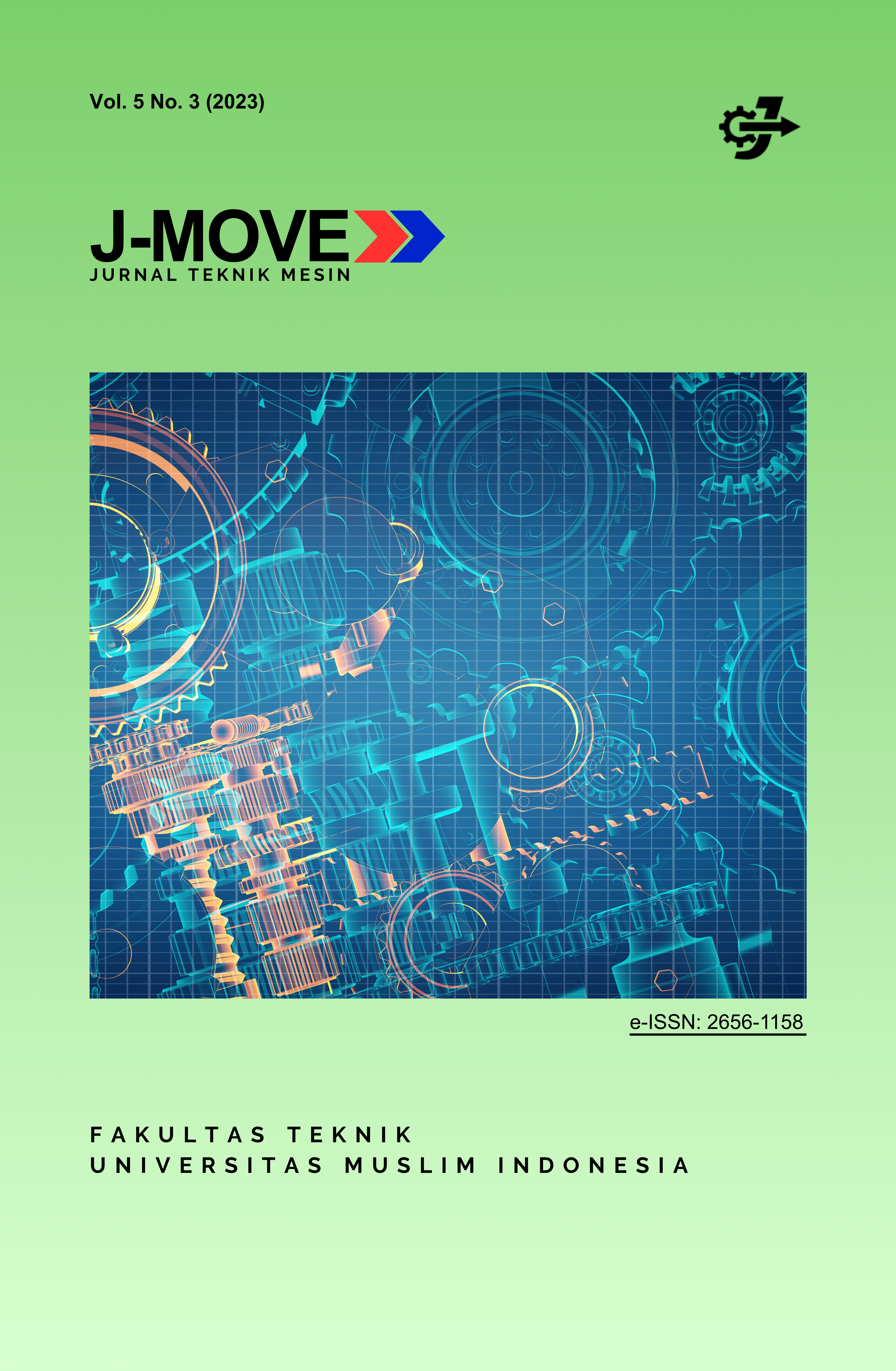Performance Comparison of Refrigeration Systems Using R-22 and R-410A Refrigerants
Keywords:
Refrigeran R-22, Refrigeran R-410a, Coefficient of PerformaAbstract
Currently, the use of hydrochlorofluorocarbon (HCFC) refrigerants has been widely banned in the industrial sector worldwide. This is due to the high Ozone Depletion Potential (ODP) and Global Warming Potential (GWP) values of HCFC refrigerants, which can cause significant environmental damage. Several studies have shown that hydrocarbon-based refrigerants such as Musicool perform better than HCFC refrigerants, both in terms of environmental impact and energy-saving effectiveness.
In this study, a comparative performance analysis of refrigeration systems using R-22 and R-410A refrigerants as cooling media was carried out. The test results showed that the compressor power consumption, from valve opening I to V, increased from 462 W to 792 W for R-22, while for R-410A refrigerant the compressor power ranged from 462 W to 704 W. The Coefficient of Performance (COP) for R-22, at a refrigerant mass flow rate of 0.0137 kg/s to 0.0311 kg/s, was between 7.2800 and 8.8543. For R-410A, at a mass flow rate of 0.0152 kg/s to 0.0316 kg/s, the COP increased from 8.1634 to 10.0584, showing an upward trend with increasing refrigerant mass flow rate.
For the cooling mass flow rate, the COP of R-22 at 0.1756 kg/s to 0.1994 kg/s ranged from 7.2800 to 7.3796, while for R-410A at the same cooling mass flow rate range, the COP was higher, ranging from 8.1634 to 8.2553. These results indicate that R-410A provides better performance efficiency compared to R-22, both in terms of compressor power consumption and COP values.
Downloads
Published
Issue
Section
License

This work is licensed under a Creative Commons Attribution-ShareAlike 4.0 International License.
All articles published in J-Move Journal (Journal of Mechanical Engineering Innovation and Development) are licensed under the terms of the Creative Commons Attribution-ShareAlike 4.0 International License (CC BY-SA 4.0).
- Copyright is retained by the authors.
- Articles may be used, copied, shared, and adapted by others for both commercial and non-commercial purposes, provided that:
- Proper attribution is given to the original authors and to the journal as the place of first publication.
- Any derivative works (adaptations, modifications, or developments) must be distributed under the same license (CC BY-SA 4.0).
By submitting their manuscript to this journal, authors agree that their work may be distributed and reused in accordance with this license.








